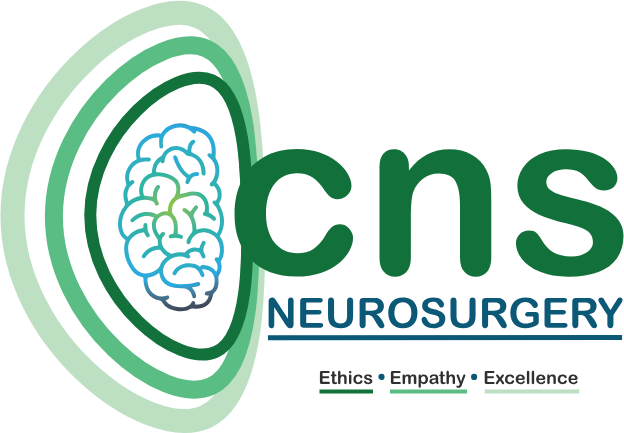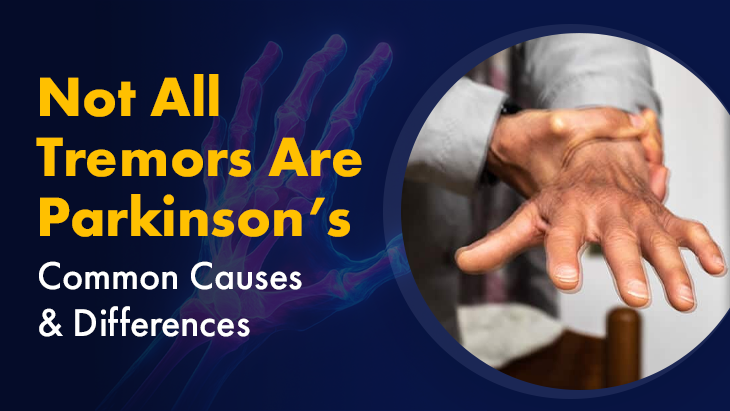Tremors, or uncontrollable shaking motions, are most commonly related to Parkinson’s disease (PD), but not all tremors mean the patient has PD. Tremors affect many patients for a host of neurological and medical reasons. The distinctions between Parkinsonian and other tremors are essential to correctly diagnosing and treating the condition.
Understanding Tremors
Tremors are spontaneous, rhythmic muscle contractions that produce shaking movements in one or more areas of the body. Tremors can involve the hands, arms, head, vocal cords, trunk, or legs. Tremors can be resting tremors (while the muscle is at rest) or action tremors (when movement is initiated).
Types of Tremors Beyond Parkinson’s
1. Essential Tremor (ET)
Essential tremor is the most prevalent movement disorder. In contrast to Parkinson’s tremor, which is present at rest, essential tremors are usually present during voluntary movement (action tremor). ET is inherited and can be exacerbated by stress or caffeine consumption.
Key Features:
- Usually involves both hands and arms symmetrically
- Worsens with movement (e.g., writing, holding a glass, using utensils)
- May include head or voice tremors
- Improves with minimal amounts of alcohol in some individuals
2. Physiologic and Enhanced Physiologic Tremor
A physiologic tremor is a normal, usually unnoticed shaking that occurs in everyone. When it is amplified by stress, exhaustion, caffeine, drugs, or hyperthyroidism, it is referred to as an enhanced physiologic tremor.
Key Features:
- Usually fine, rapid tremors of the hands
- It may be transient, secondary to external factors (e.g., anxiety, use of stimulants)
- Disappears when the cause is removed
3. Dystonic Tremor
Dystonic tremor affects people with dystonia, a neurological disorder that causes involuntary muscle contraction. It commonly appears when the affected muscles are at work and, in some instances, can be alleviated with a sensory trick, such as touching the region involved.
Characteristics:
- Brought about with dystonia (abnormal posture or muscle contracture)
- Uneven and jerky about other types of tremor
- It may get better when the affected body part is touched
4. Cerebellar Tremor
Cerebellar tremors are caused by damage or dysfunction in the cerebellum, the region of the brain responsible for coordination. They tend to be intentional tremors, which worsen as an individual moves towards their target.
Key Features:
- It gets worse as the movement continues towards a target (intention tremor)
- Frequently due to stroke, multiple sclerosis, or head injury
- Linked with balance and coordination problems
5. Psychogenic (Functional) Tremor
Psychogenic tremor is due to psychological reasons, usually found in patients with anxiety, stress, or conversion disorders. These tremors can be variable in intensity and tend to resolve when the patient is distracted.
Key Features:
- Abrupt onset and variable severity
- Frequently linked with emotional stress or trauma
- This can be improved with psychological treatment
6. Drug-Induced or Toxic Tremors
Some medications or substances cause tremor as a side effect. Stimulants, antidepressants, lithium, and some anti-seizure medications can induce tremors, as can withdrawal from alcohol or drugs.
Key Features:
- Associated with particular medications or use of a substance
- Returns to normal after cessation of the causative agent
7. Parkinsonian Tremor
Although Parkinson’s disease is the most recognized cause of tremor, its tremor has distinct features.
Key Features:
- Resting tremor (happens when hands are resting and diminishes with movement)
- Usually, it begins on one side of the body before it affects the other
- Slowness (bradykinesia) and stiffness are also present
Diagnosis of Tremors
Proper diagnosis is necessary for successful treatment. Physicians usually employ:
- Medical History & Physical Exam – Determining onset, triggers, and related symptoms
- Neurological Examination – Monitoring for muscle rigidity, balance, and coordination
- Imaging Tests (MRI, CT Scan) – To exclude brain abnormalities
- Blood Tests – To identify underlying metabolic or toxic aetiology
Treatment Options
Treatment is based on the aetiology of the tremor. Some of the common strategies are:
1. Medications
- Beta-blockers (e.g., propranolol) – Frequently used for essential tremor
- Anti-seizure medications (e.g., primidone) – Beneficial in ET and cerebellar tremors
- Levodopa or Dopamine Agonists – For Parkinson’s tremor
- Anti-anxiety drugs – Beneficial for stress-related or functional tremors
2. Physical & Occupational Therapy
Physical and occupational therapists can assist patients in enhancing coordination, building up muscles, and modifying daily activities to minimize the tremor effect.
3. Lifestyle Changes
- Limiting caffeine and stimulants
- Controlling stress and anxiety
- Enhancing quality of sleep
4. Surgical & Advanced Treatments
For significant tremors, particularly in Parkinson’s disease and essential tremor, advanced treatment may be contemplated:
- Deep Brain Stimulation (DBS) – Placing electrodes to modulate abnormal brain function
- Brain ablation/RF lesioning/Thalamotomy – deactivation/ablation of a brain area of a few millimetres size by heat energy
- Focused Ultrasound Therapy – Non-surgical treatment to ablate tremor-generating brain regions; similar to RF ablation but without incision (non-invasive)
Conclusion
Tremors can be frightening, but not every tremor points to Parkinson’s disease. Numerous conditions produce shaking, and it is important to have a good medical assessment to ascertain the cause. Shaking caused by essential tremors, side effects of medications, anxiety, or neurological disorders will ultimately require proper diagnosis and specific management that will enable individuals to control symptoms and enjoy quality of life. If you or a family member have ongoing tremors, seeking a referral to a neurologist is the first step toward successful control.

